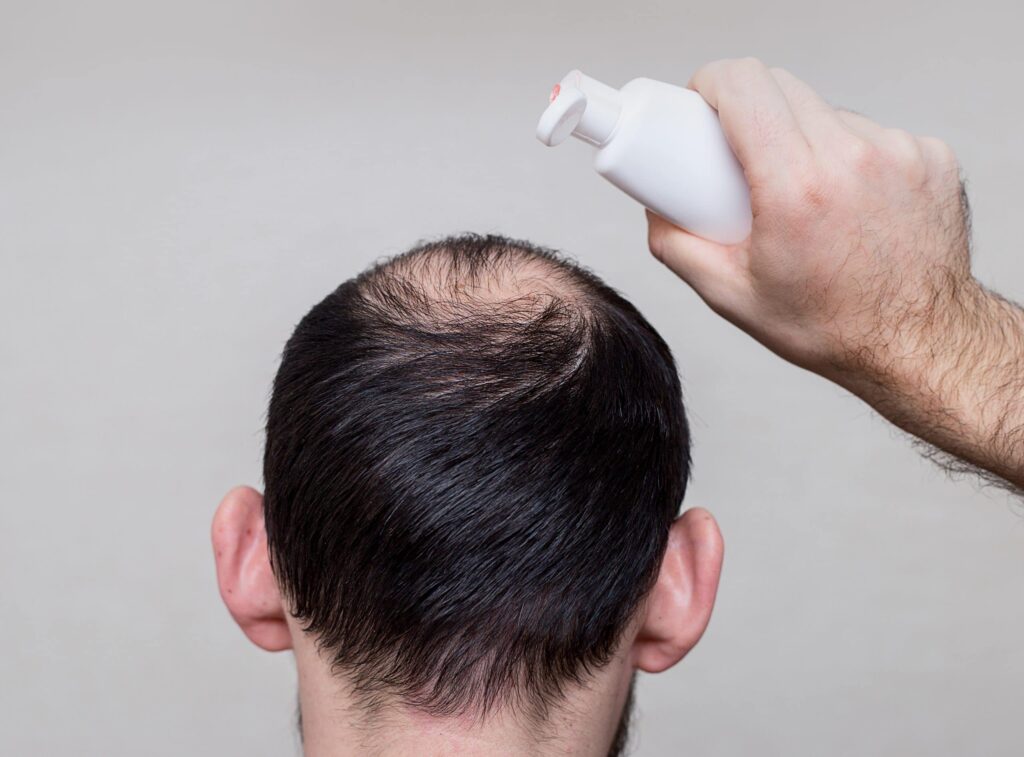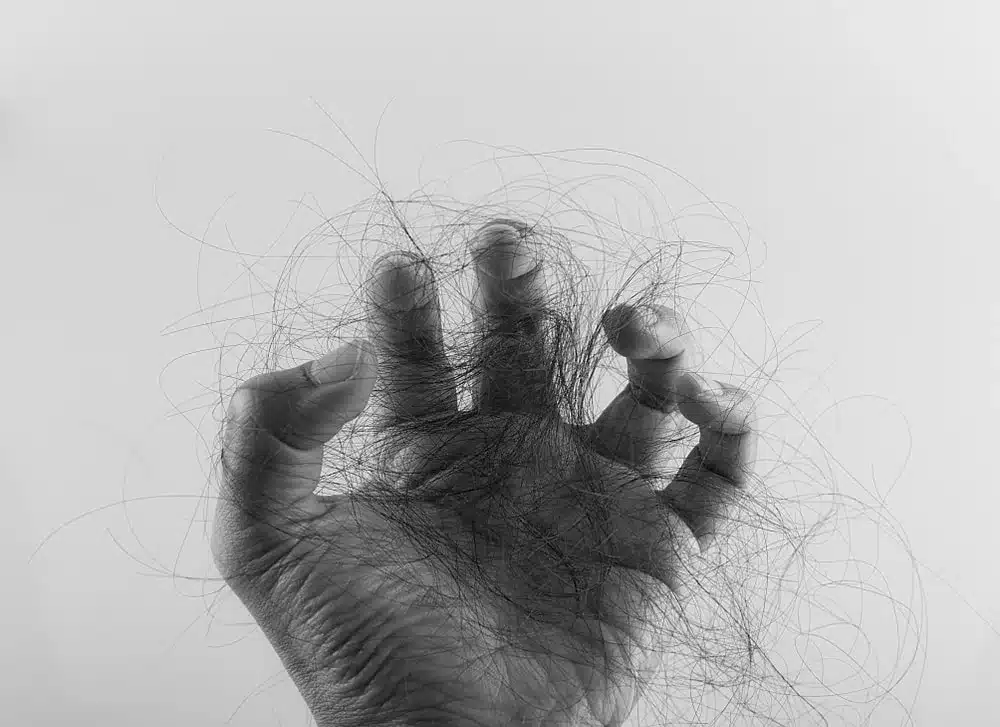
Guide To Hair Loss Treatments In Singapore
- January 23, 2022


For most of us, our hair is something we control; we cut it, style it and choose how to wear it.
It is an expression of ourselves, our personality and our image. If we lose a lot of hair, we may feel less confident, less in control and it can affect our self-esteem.
In fact, hair loss is the top hair concern amongst Singapore women aged 35-44! That’s further compounded by the how COVID-19 has amplified stress and causing accelerated hair loss among Singaporeans.
Hair loss is often inevitable. In most cases, it occurs due to aging and depends largely on genetics.
The good news? Modern medicine and hair loss medication (including the likes of minoxidil or finasteride commonly available in Singapore) has made hair loss treatments and even reversal possible!
Hence, if you’re looking for an all-encompassing guide to hair loss treatments in Singapore, you’re at the right place!
Hair loss is often tough to spot. You probably won’t be pulling huge masses of hair out of your shower drain, and you most likely won’t develop any obvious balding spots straight away – hair loss usually doesn’t cause mass shedding like this.
Instead, you might notice that your hair has a little less volume than usual. The texture of your hair might have changed slightly, becoming more weak and brittle when it should be healthy and thick.
The pigment in your hair can also change – it might start to become lighter, with an almost translucent quality to some of your newly-grown hairs.
In fact, hair loss starts as early as your 20s! Apart from sudden hair loss, hair falling out in clumps or the general itching or burning of your scalp, below are a few more symptoms to take note of as an indication of hair loss issues:
Also Read: Different Types Of Hair Loss – When To See A Specialist
If you lose hair from your eyebrows or eyelashes, it could mean you have a serious form of the autoimmune condition alopecia. Alopecia areata or alopecia Universalis can cause hair loss in greater quantities and in areas of the body besides the scalp. That’s because the body mistakes the hair follicles as dangerous and attacks them, causing the hair to fall out of the follicles on various parts of the body.
When thinning hair and muscle aches occur simultaneously, it’s possible you have hypothyroidism, a type of hormonal autoimmune hormone imbalance. At first, a person with hypothyroidism could show no symptoms, but as their body deals with the hormone imbalance, they may notice fatigue, weight gain, muscle aches, and hair loss.
Iron deficiency, which is considered a type of anaemia, happens when the body can’t produce enough healthy red blood cells. If a person lacks healthy red blood cells, they may experience side effects like brittle nails and hair loss. Iron deficiency can also make a person feel constantly tired and weak. Other symptoms include chest pain and cold hands and feet.
Before we delve into the various causes, it’s important for you to understand the hair growth cycle. It follows quite a predictable pattern until something disturbs it. Here’s a quick breakdown of the phases of hair growth:
This is the active phase of hair growth. As many as 85-90% of the hairs on your head are growing at any given time, and each hair is in the growing phase for up to seven years.
Over the course of a few weeks, hair growth slows as follicles shrink. About 3% of all hairs are in this phase at any one time.
The hair follicle is completely at rest and no longer growing. Around 6%-8% of all hair is in the resting phase at any given time and this phase typically lasts a few months.
At the end of the resting phase, the hair will gradually detach from the follicle and fall out. This is why the average person sheds between 50-100 hairs each day. After exogen, the old hair is replaced with a new hair in the anagen phase, and so the cycle begins again.
All said and done, any disruptions in the hair growth cycle can lead to hair loss! Hence, these are the most common causes of disruptions to the hair loss cycle:
This is the most common and explicable cause of hair loss in men, showing up in the form of male-pattern baldness (aka androgenetic alopecia).It typically happens gradually (which is why some men take a while to notice that it has already started) and in predictable stages, with hair retreating from the front of the forehead, and with the formation of a bald patch at the back of the head.
Eventually leaving a U-shaped footprint of thin hair around the back of their head. This occurs when testosterone is converted into dihydrotestosterone (DHT), which begins deteriorating hair follicles, shortening the anagen (growth) phase of hair follicles. A shorter growth phase leads to shorter, thinner hair.
This often continues until the appearance of baldness covers the majority of the scalp.
Medical conditions, including:
Alopecia is the medical term for hair loss. Alopecia may cause hair loss only on the scalp or all over the body. It may result in thinning hair, patches of hair loss, some balding, or total baldness, and it maybe permanent or temporary. There are numerous reasons, including genetics. Talk to your doctor about possible treatments.
An infection that causes a high fever, a fungal skin infection, and bacterial infections like syphilis can all be responsible for balding or thinning hair. Treating the underlying infection can restore hair growth and prevent future hair loss. Your first step is to seek medical attention for the primary health problem.
An underactive thyroid (a medical condition called hypothyroidism) or an overactive thyroid (hyperthyroidism) can result in hair loss because each condition causes a hormonal imbalance. Hormones help to regulate nearly every function in the body, including hair growth. Getting the right treatment to control either of these thyroid conditions will get hormones under control, stop hair loss, and allow your hair to start growing back.
Wildly fluctuating hormones that occur following pregnancy and childbirth can also lead to hair loss. It takes time after pregnancy for hormone levels to return to normal, so it’s not at all uncommon for post-partum moms to notice thinning hair or even patches of baldness. This often occurs about three months after baby’s arrival. Don’t worry — as the rest of your body recovers, so will your hair follicles. The hair loss is only temporary — your hair will grow back.
Chemotherapy and radiotherapy are the most obvious ones here, but the baldness they incur is almost always temporary. A range of other treatments for conditions including cancer, arthritis, depression, heart problems, gout, and high blood pressure can also contribute to hair loss.
It’s a more factor of hair loss than most will assume. Many will suffer some form of hair loss after particularly stressful events, but on a temporary basis. Once stress is brought under control, normal hair growth is usually restored.
Some hairstyles that pull hair tight can cause traction alopecia. Hot oil treatments and perms can cause inflammation in the hair follicles that leads to hair loss. This can unfortunately be permanent if scarring has occurred. Excessive bleaching isn’t good for a healthy scalp either.
Currently, there are a few available treatment options for hair loss restoration.
Minoxidil lotion is applied to the scalp and may work by increasing blood flow, and therefore nourishment, to the hair follicles.
In several cases, people may find that the use of topical minoxidil can make their hair greasy, fuzzy and it is not uncommon to develop irritation of the scalp along with associated itching and a burning sensation.
Oral minoxidil can be used instead when topical minoxidil cannot be used for all the above reasons.
However, it should be noted that the treatment has zero effect on the hormonal process of hair loss, and its benefits are temporary. Hair loss often continues if usage is discontinued.
Finasteride in Singapore inhibits type II 5-alpha-reductase, which is the enzyme responsible for converting testosterone into the more potent androgen DHT.
DHT levels are reported to be reduced by 60 percent when the drug is taken, which prevents the susceptible follicles from being affected by the hormone and returning their normal size!
Finasteride is also widely available in Singapore — however, you should also consult a healthcare professional before seeking finasteride as a treatment for hair loss.
Hair transplantation treatments, such as SL Aesthetic Clinic’s Follicular Unit Extraction (FUE) hair transplant is a method of obtaining follicular units (i.e hair transplants) – naturally occurring groups of one to four hairs (also known as grafts), for hair transplantation.
Part of the FUE hair transplant in Singapore process includes extracting individual follicular units a from the hair restoration patient’s donor area/site, ideally one at a time. In fact, the FUE hair transplant technique helps to minimise trauma to donor site. This is done in a random manner, such that hair density in donor sites is not visibly reduced.
SL Aesthetic Clinic’s hair transplantation Follicular Unit Extraction (FUE) treatment is suitable for both males and females. Hair transplant is not limited to the head. In fact, it can include eyebrow transplants and beard transplants as well.
Some of the benefits of FUE hair transplant compared to other hair transplant procedures include:
Also Read: Are Hair Loss Treatments In Singapore Expensive?
Anyone who is experiencing any type of hair loss to minimize stress by exercising, getting adequate sleep, and practicing self-care with activities such as meditation or yoga. That’s because managing stress has been recorded to help some patients with alopecia areata. Stress can increase inflammation in follicles, leading to hair shedding. Reducing stress allows hair to fight off inflammation and resume its natural growth cycle.
While vitamins can’t prevent hair loss in an outright manner, vitamin deficiencies maybe a risk factor for hair loss. Some vitamins and minerals that may help include:
If you’re considering taking a multivitamin supplement, you should talk to a doctor first.
Taking proper care of the hair and scalp can help prevent hair loss. It may also improve hair growth. Keeping the scalp and hair clean may also prevent hair damage and loss. Avoiding harsh treatments, such as heat, curling, and dyes may also help.
Great hair begins with top-notch nutrition. Essentially, maintaining healthy skin and healthy hair is related to having a healthy, balanced diet and good hydration with water intake. Avoiding sugar and processed food as well as following a diet rich in healthy proteins, fruits, vegetables and nuts to fill your nutritional needs would be the best.
The ideal day to start preventing or treating your hair loss is today. If you’re self-conscious about the condition of your hair and scalp, we’re here to help, regardless of whether it’s through hair loss medication such as oral minoxidil, finasteride, or hair transplants.
With our panel of medically-trained and certified doctors recognised by the Singapore Medical Council’s Aesthetic Practice Oversight Committee (APOC), you’re in safe and able hands to start your hair loss treatment journey!
Walk-in or call us at +65 9850 71112 to start your journey to the hair you desire and deserve!
Like what you read? Share them!